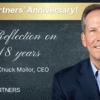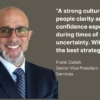
Everyone talks about employee engagement, but as an HR professional, a manager, or an employee you are probably more interested in what can we do to be more engaged. We know the research and have seen the financial metrics that shows the more engaged you and your workforce are the more productive, profitable, and innovative you will be. Other benefits include having more satisfied customers and improving the retention of top talent.
So now that we know the benefits of having it, let’s get clear on what it is and what it’s not.
Employee Engagement (EE) is not about happiness and satisfaction, though being engaged will lead to happy and satisfied employees. It is when employees have deep emotional commitments to both the company and its goals, which leads to discretionary effort. Discretionary effort is when an employee goes beyond their own personal gain for the sake of the organization.
So how do you attain deep emotional commitment to your company and goals, and achieve discretionary effort? There are 5 key accelerators – Purpose, Clarity, Development, Recognition, and the #1 Driver to EE.
1. Purpose
Identify and state your purpose as an organization. What and who do you strive to be? Who are you aspiring to be? What is your value proposition and brand? Can you identify and articulate this? Be concise and clear. If your purpose hasn’t been fully identified, go through the exercise, it’s connected to and drives everything you do. As your purpose comes to fruition, it should unfold into your mission, vision, values and strategies – which will link to how you will achieve your purpose. Your purpose is why people want to work for you, why people want to achieve, the reason they develop a deep emotional commitment and a key factor to why they want to stay.
One way to gain insights into understanding your individual purpose is to heighten your self-awareness. Are your motivations and behaviors driving your purpose and are you clear on understanding the connection? Using tools like the Predictive Index® (PI®) can accelerate your self-understanding, and the understanding of your people, teams, and leadership. PI can help you locate opportunities to leverage, and challenges to address, in order to define your purpose.
PI is an effective assessment that requires a short amount of time and provides a comprehensive report that captures the essence of what drives and motivates you, your strengths, and how you approach your job, responsibilities, and people. It helps you understand your natural tendencies and responses to decisions, relationships, risk, details, conflict, change, stress, pressure, and much more. Imagine how this understanding and increased self-awareness can help you better understand what role, team, organization and leader(s) are best for you! And the secret sauce – how to then better understand others and why they are the way they are, and how you can better navigate and adjust situationally, to have a more effective, healthy and engaged life. We’d love to talk to you more about the link between PI, Purpose and Employee Engagement – erinne.tripp@mcgpartners.com.
2. Clarity
Get clear and be concise with your purpose, vision, mission, strategy and expectations. Where have you been, where are you today, and where are you going. Repeat Often! Things are moving and changing at incredible speed, and people need to constantly know what is the current line of sight. Goals established in December are easily outdated by March. Are you agile enough to update and modify your goals and expectations? How does this impact your short and long-term goals? Communicate, communicate, and communicate; then communicate some more. Most organizations believe they are doing enough but they don’t. Use multiple formats for communication – website, intranet, emails, posters, town hall meetings, manager and team meetings, brown bag lunches, etc.
Quick question – if you polled/asked everyone in your organization if they fully understand their role/job and goals, and how it impacts and is connected to the overall purpose, vision, strategy and goals of the organization, what would they say? Do you think they would know? Would the responses be consistent across the organization? Ask often!
3. Development
People want opportunities to grow, learn and develop, regardless of generation. We all want advice, feedback, mentorship, and advocacy! Do you have a mentor, advisor, and/or advocate? If not, what is your plan to get one? As an organization, are you actively promoting mentorship? Do you have development plans for every employee that are discussed and reviewed often and which get updated more frequently than annually? Today’s employee wants feedback and input – often. As the organizational and market goals and direction are changing often, your people’s skill set and objectives need to evolve as well.
One important change with the newer generations in the workforce is that they want to have an impact and move quickly. They don’t look at their careers in the traditional “ladder model”, they instead look at their careers in a more experiential and matrixed way. They want to learn, grow, and work on projects and teams. How many multi-functional and cross generational project teams do you have? Does your organization support employees to rotate across jobs, functions, and geographies? Can people move quickly into expanded and advanced roles if they demonstrate outstanding results, performance and potential?
4. Recognition
People and teams want to be recognized for their accomplishments, achievements, goals and milestones reached, and for their impact and contributions. They want to be recognized financially (raises, bonuses, stock, equity, rewards), through advancement and promotions, and through increased roles and responsibilities. Know your audience – their personalities and styles, and what motivated and drives them. Depending on who they are, they will be motivated and driven by different things. Some employees want public recognition, for others, one-to-one recognition and gratitude has a much greater impact.
Research shows that compensation is not one of the top drivers of employee engagement, however, at a minimum, people want to be fairly compensated, rewarded and recognized.
5. The #1 Driver of Employee Engagement
The #1 driver of employee engagement is the effectiveness of your managers in how they manage and lead. This conclusion has been validated by more than 30 years of research. Why? As we covered in the previous four key factors to EE, the one common theme and drive to each is managing and leading. Both are critical. Effective management is:
- Tactical thinking
- Ensuring day-to-day execution and plan
- Keeping team members focused and productive
- Recognizing and rewarding
Effective leadership is:
- Strategic thinking
- Understanding & communicating the purpose, vision, mission
- Inspiring others to realize the vision
What do your leaders need to do?
- Communicate a clear vision of the future
- Build trust
- Involve employees and in decision making
- Demonstrate commitment to values
- Respond to employee feedback and input
Creating a leadership culture and increasing the engagement of your employees can be positively impacted by providing the right learning and development programs as well as using assessments like 360s and the Predictive Index®.
These 5 key accelerators to employee engagement are critical to the overall success of your organization and how you align your organization to reach your targets for success.
About the Author: Chuck Mollor
About MCG Partners
MCG Partners a woman-owned, Greater Boston-based consultancy specializing in executive coaching, leadership development, talent management, and organizational development solutions. We help businesses optimize success through the entire management life-cycle. MCG Partners is also a Predictive Index® (PI®) certified partner.
To learn more about MCG Partners’ services or The Predictive Index®, contact John Griffith at john.griffith@mcgpartners.com or visit mcgpartners.com.







